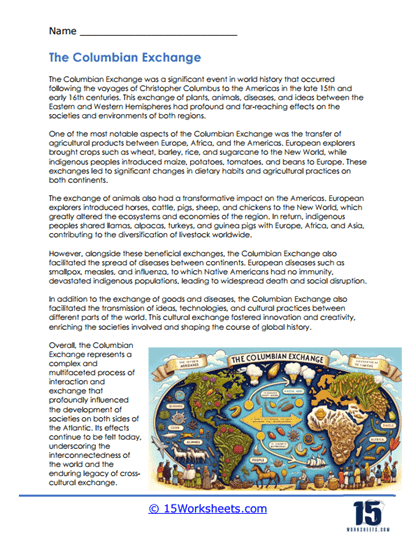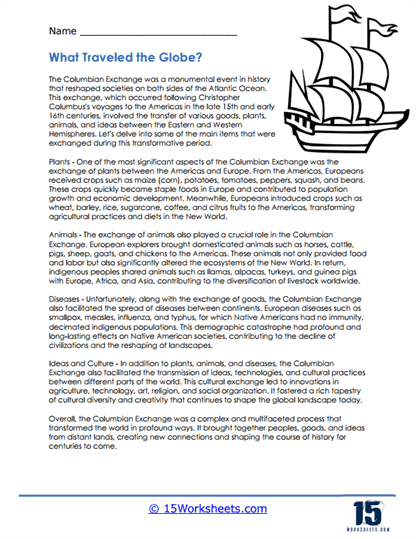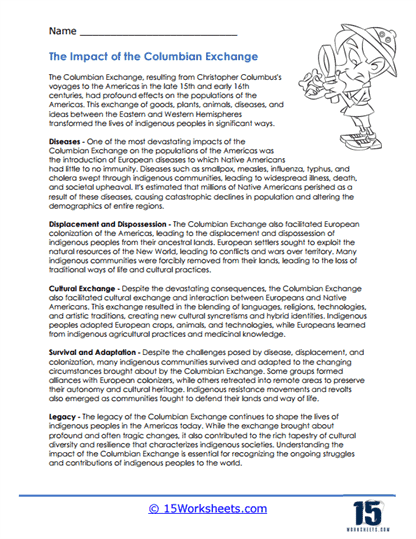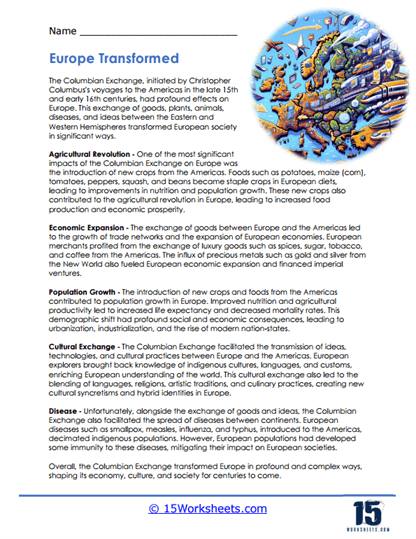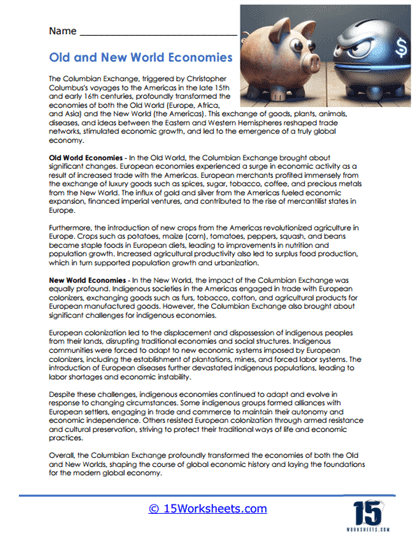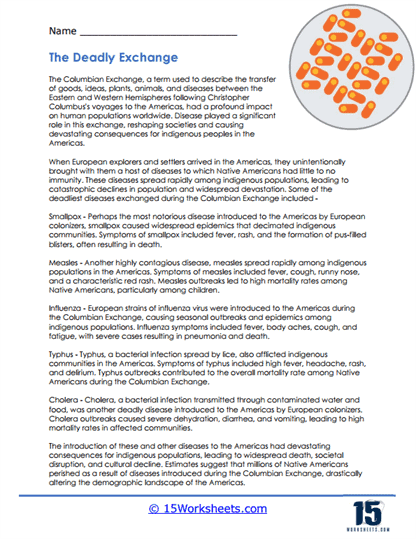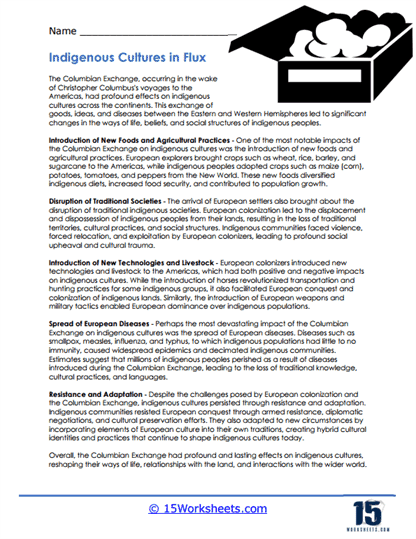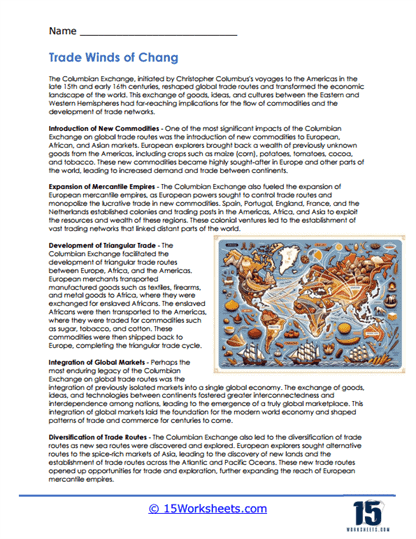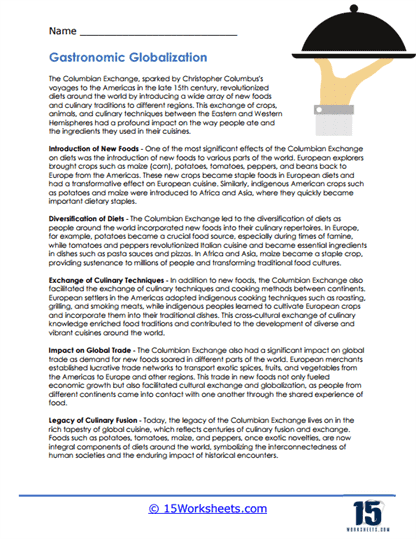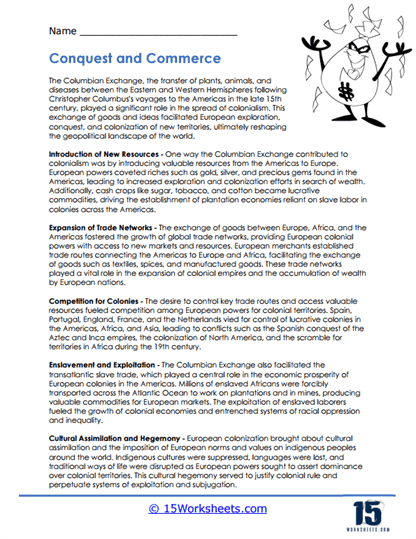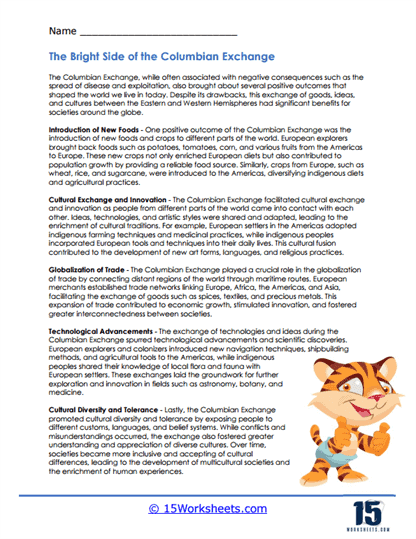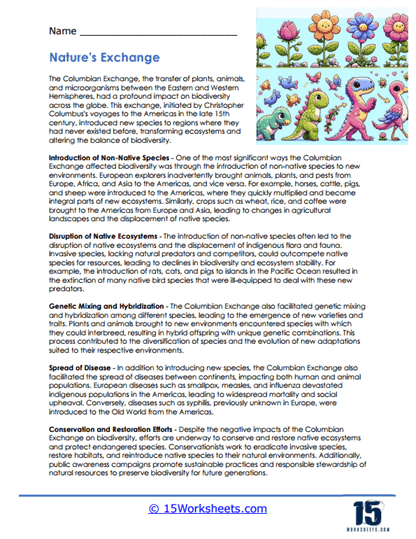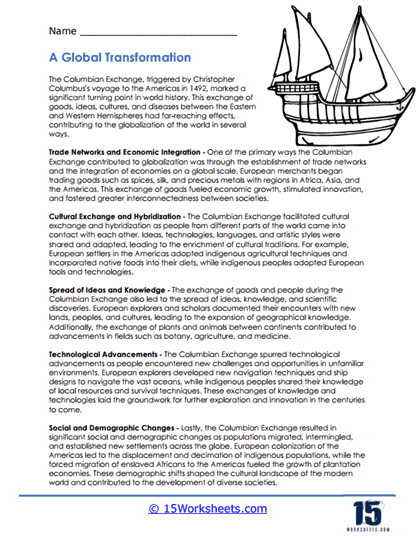Columbian Exchange Worksheets
About These 15 Worksheets
The Columbian Exchange refers to the widespread transfer of plants, animals, culture, human populations, technology, diseases, and ideas between the Americas, West Africa, and the Old World (Europe, Asia, and Africa) that began in the late 15th century following Christopher Columbus’s voyages to the Americas. This exchange had profound effects on the world, fundamentally altering the lives and landscapes of people across continents.
These worksheets are designed to enhance students’ understanding of the Columbian Exchange-the widespread transfer of plants, animals, culture, human populations, technology, diseases, and ideas between the Americas, West Africa, and the Old World in the 15th and 16th centuries. These worksheets not only help students grasp the historical impact of these exchanges but also deepen their understanding of the foundations of global trade and its long-term effects on the world. The following discussion outlines the various types of exercises found on these worksheets and how they contribute to students’ learning.
The Benefits of These Worksheets
Enhanced Comprehension of Global Trade – By working through various exercises, students develop a nuanced understanding of how global trade was fundamentally transformed by the Columbian Exchange. They learn about the origins of goods that are commonly traded today and the historical roots of modern economic systems.
Improved Critical Thinking Skills – The variety of exercises on these worksheets challenges students to analyze, evaluate, and synthesize historical data. Students learn to draw connections between historical events and contemporary issues, enhancing their ability to think critically about the world.
Better Research and Writing Skills – Tasks like essay writing and economic analysis require students to gather information, organize their thoughts, and articulate them clearly. These skills are essential for academic success across all subjects.
Greater Historical Awareness and Empathy – Role-playing and discussion questions help students understand the human impact of historical events. This fosters a greater appreciation for the complexities of history and the varied experiences of different cultures and societies.
Long-term Retention of Information – The interactive nature of these worksheets aids in memory retention. Students are more likely to remember what they have actively engaged with, especially when it involves various types of learning activities like writing, discussing, and problem-solving.
Impact of the Columbian Exchange
Biological and Ecological Exchanges – The introduction of new crops and livestock had dramatic effects on agriculture and food supply. European wheat, barley, and livestock such as horses and cattle were introduced to the Americas, while American crops like maize, potatoes, and tomatoes were brought to Europe and Asia. These transfers drastically changed diets globally and supported population growth.
Spread of Diseases – One of the most devastating aspects of the Columbian Exchange was the spread of diseases such as smallpox, measles, and influenza from Europeans to Native American populations, who had no immunity to these diseases. This resulted in the deaths of millions of indigenous people and significant cultural disruption.
Cultural Exchanges and Slavery – The Columbian Exchange also involved significant cultural exchanges and the tragic transatlantic slave trade. Millions of Africans were forcibly transported to the Americas, deeply impacting African societies and contributing to the development of racially-based slavery in the New World.
Who Was Affected Most by the Columbian Exchange?
Indigenous peoples of the Americas were perhaps the most dramatically affected. The introduction of European diseases led to high mortality rates and significant population declines. Additionally, European colonization efforts often resulted in the displacement, cultural assimilation, and sometimes outright destruction of indigenous communities.
Who Benefited the Most from the Columbian Exchange?
Europeans often reaped the greatest benefits from the Columbian Exchange. The introduction of high-calorie, nutritious American crops such as potatoes and maize contributed to a significant population increase in Europe. This demographic expansion allowed Europe to exert greater influence globally. Furthermore, the wealth generated from colonial ventures and the slave trade enriched European economies, funded the development of powerful nation-states, and fueled the growth of a capitalist global economy.
Who Benefited the Least from the Columbian Exchange?
The indigenous peoples of the Americas benefited the least. In addition to suffering from disease and displacement, many communities faced cultural and political disruption. Their ways of life were permanently altered, and they often found themselves marginalized or oppressed within colonial societies established by Europeans.

